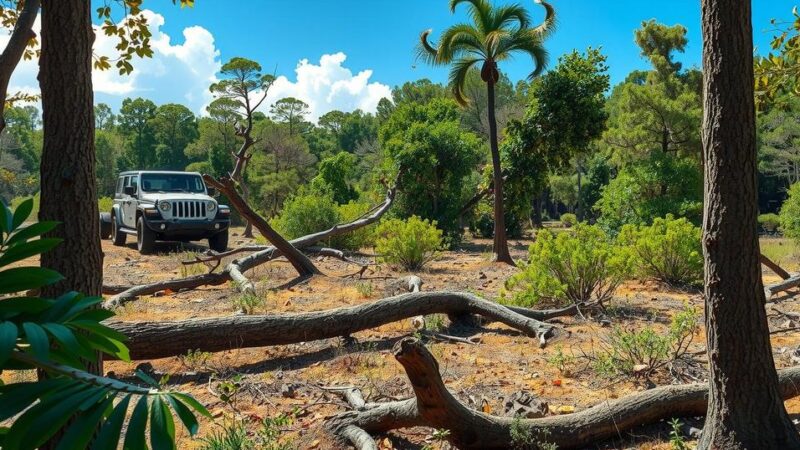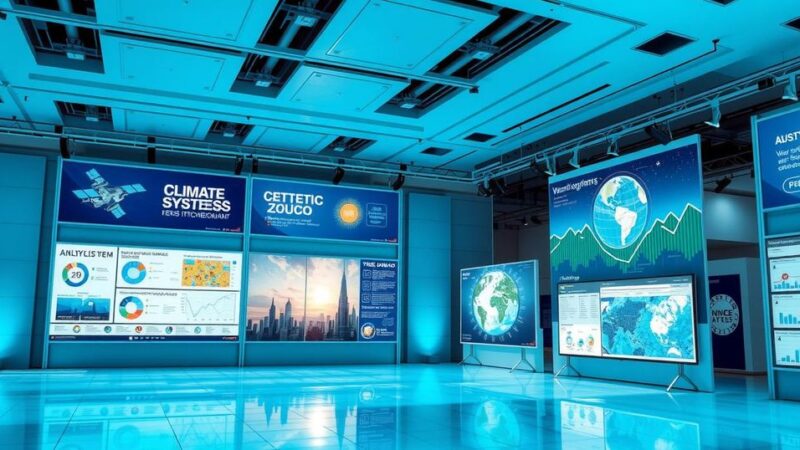Research from Chile shows that fog harvesting could provide drinking water to dry cities like Alto Hospicio, which receives less than 5mm of rainfall annually. This innovative method captures moisture from fog using mesh screens, potentially supplying enough water to meet community needs and support local agriculture. The study highlights the urgency of implementing sustainable water sources in urban areas facing increased demand due to population growth and climate change.
Recent research from Chile indicates that large-scale fog harvesting could provide drinking water for some of the driest cities globally. In particular, the study focused on Alto Hospicio, a desert city in northern Chile receiving less than 5mm of rainfall annually. Dr. Virginia Carter Gamberini, the lead researcher from Universidad Mayor, noted that many residents, especially in impoverished areas, heavily rely on water delivered by truck due to limited access to clean water resources.
Fog accumulation over the mountains of Alto Hospicio presents a substantial yet untapped resource. The process of fog harvesting is straightforward and involves suspending a mesh between poles that captures moisture from fog, which then channels the collected water into storage tanks. While such harvesting methods have been successfully implemented at a small scale in various regions for decades, Dr. Gamberini advocates for scaling up this technology to improve urban water supplies.
The research team assessed the volume of water obtainable through fog harvesting, analyzing cloud formation and weather patterns via satellite images. They determined that the consistent fog over the Pacific Ocean, which blows inland to Alto Hospicio, could secure a sustainable water source for its underserved communities. Their findings were published in the journal Frontiers of Environmental Science.
The fog forms when warm, moist air from the Pacific Ocean interacts with cooler water, creating favorable conditions for harvesting. The researchers deduced that 17,000 square meters of mesh could meet the weekly water demand of approximately 300,000 liters, currently supplied by truck, and 110 square meters could support irrigation for city green spaces. Additionally, fog water could facilitate hydroponic agriculture, yielding significant produce within a month.
Given that Alto Hospicio is located in the Atacama Desert—one of the driest regions on Earth—its main water sources are ancient underground aquifers. With an increasing urban population and rising demands from mining and industry, alternative sustainable water sources have become paramount. Dr. Gamberini highlighted Chile’s unique geographical advantages, which allow for effective fog harvesting due to its extensive coastline and mountainous terrain.
The research team aims to create a comprehensive fog harvesting map for Chile, positing that utilizing “water from the clouds” could enhance urban resilience amid climate change while also improving access to clean water. This initiative symbolizes a critical step toward addressing the water scarcity challenges faced by many communities.
In summary, the potential of fog harvesting in Alto Hospicio presents an innovative solution to combat water scarcity in arid urban environments. This method not only offers a sustainable drinking water source for underserved populations but also supports agricultural practices. As climate change intensifies, such initiatives could play a vital role in ensuring water security for cities reliant on dwindling resources.
Original Source: www.bbc.com






